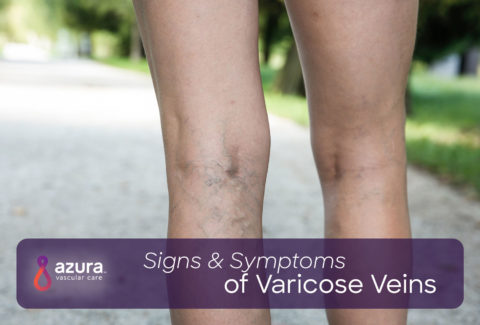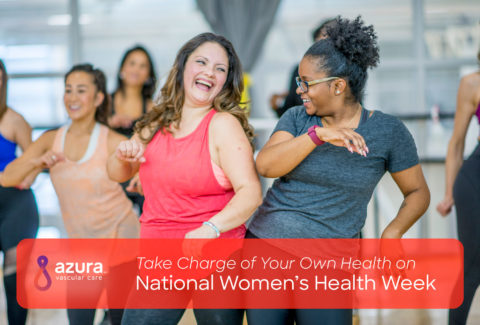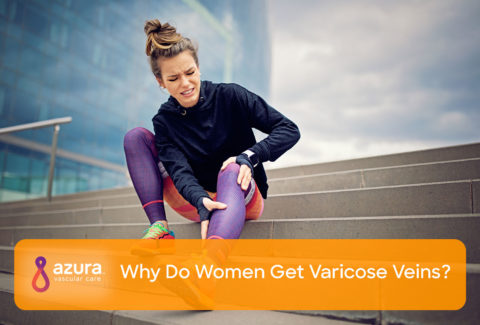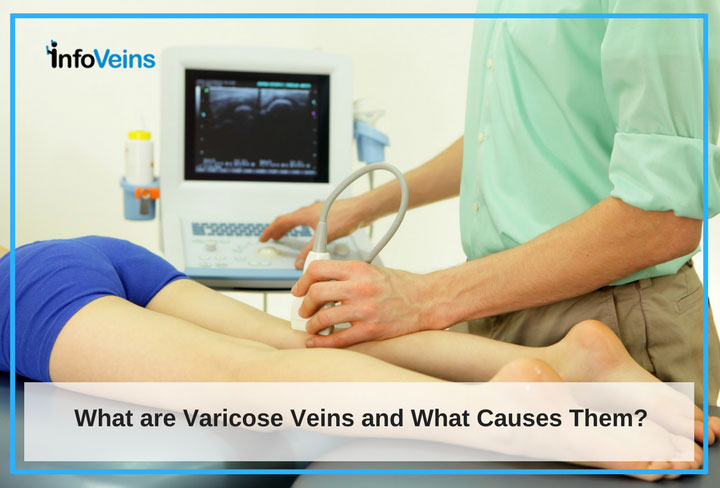
Are your legs sometimes uncomfortable or swollen? Do you ever experience pain or discomfort in one or both of your legs? Do you shy away from wearing skirts or shorts because you don’t like how your legs look? Are the blue bulges on your legs making you self-conscious?
You may have a common, treatable medical condition known as varicose veins. You’ve probably heard of them…but what are varicose veins and what causes them? And more importantly – are you at risk and are they dangerous?
Read on to learn more about varicose veins, including how to find out what causes them and to determine if you should be concerned.
What Are Varicose Veins?
When educating yourself on what varicose veins are and what causes them, the best place to start is with the two basic types of blood vessels in the body:
- Arteries
- Veins
Your arteries carry the blood that is filled with oxygen and nutrients from the heart to your body’s tissues. After the oxygen and nutrients have been delivered to your tissues, your veins carry the blood back to your heart.
Varicose veins are dilated veins, that are twisted and enlarged and can be seen and felt under the surface of the skin. Any vein in your body can become varicose, but the most commonly affected are those in your legs. Varicose veins are a common condition.
There is a smaller, milder version of varicose veins known as spider veins. They appear on the skin surface as a group of blue or reddish lines. These lines may branch out or look like a spider web. Unlike the larger varicose veins, spider veins usually do not bulge above the skin or cause any serious medical problems.
What Causes Varicose Veins?
Varicose veins can be caused by dysfunctional valves in the veins and weak walls of the veins.
- Leaky Valves: Veins have one-way valves inside of them to prevent blood from flowing backwards. When these valves weaken and begin to leak, blood can build up in the vein.
- Weak Walls: Weak walls are less able to handle an increase in pressure. This increase in pressure is more likely to happen in the legs because we spend so much time sitting and standing, which allows blood to collect in our legs.i Over time, increased pressure can cause the vein to enlarge and twist, creating varicose veins.
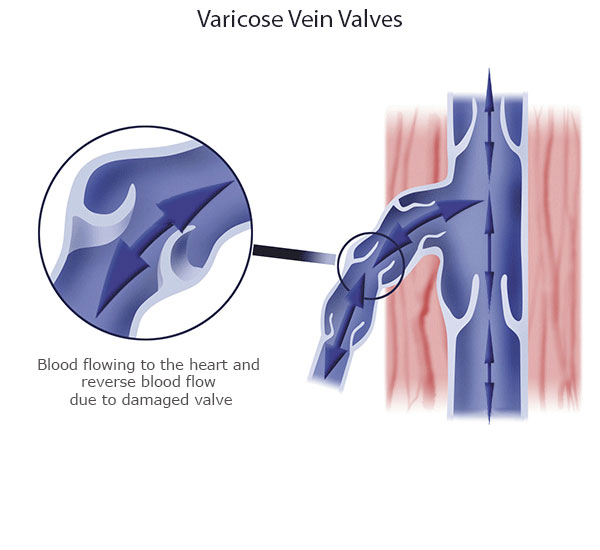
What Are the Risk Factors for Varicose Veins?
It’s estimated that up to 30% of adults have varicose veins.ii Here are some of the known reasons that may contribute to varicose veins:
- Aging – As we age, our veins do too, which increases the risk of damage and weakening of vein valves and walls, thereby increasing the likelihood of developing varicose veins.
- Family history – Varicose veins tend to run in families. If someone in your family has them, this may increase your chance of developing them as well.
- Gender – It’s believed that female hormones relax your veins, increasing the risk for varicose veins. The risk may also be increased with the use of female hormone medications such as birth control pills and hormone replacement therapy.
- Occupation – Standing or sitting at a sedentary job for long periods of time can increase pressure in your veins.
- Pregnancy – While pregnant, pressure increases in your leg veins as the baby grows and pushes on the veins in your lower abdomen. It’s possible that varicose veins in this situation can disappear after the birth of your baby.
- Vein damage – Damage to the valves or walls of your veins, such as from a blood clot or injury, can increase your chance that the valves will weaken, resulting in varicose veins.
- Weight – Increased body weight can put extra pressure on your veins, making varicose veins more likely.iii
To learn more about this, check out our dedicated article on the risk factors for varicose veins.
Do You Have Varicose Veins? Signs and Symptoms You Need to Know
Do you think you have varicose veins? If you experience one or more of the symptoms listed below, your next step should be to see your doctor:
- Veins that you can see just under the surface of your skin
- Blue or reddish color of the skin around the veins
- Swelling of your feet and ankles that may come and go
- Legs that can feel uncomfortable or heavy
- Cramping, throbbing or a burning sensation in your legs
- Itching near the area of one or more of your veins iv
While varicose veins can be diagnosed through a simple exam by your doctor, the best test for diagnosis is with a duplex ultrasound. This imaging test uses sound waves to look at the size of the veins and to assess how the blood is flowing. It will also check for a blood clot in the vein.
RELATED: Who Gets Varicose Veins? Surprise…It’s Not Just the Elderly
Is This More Than Just a Cosmetic Problem? Complications to Be Aware Of
Having varicose veins means there’s a problem with how your veins are working. It’s important to understand that, while not common, there are some serious medical complications that can stem from varicose veins. Some of these can include:
- Bleeding – Sometimes, if the vein is close enough to the surface, a direct cut can cause more bleeding than normal.
- Blood clots – Pooling of blood can lead to blood clots within the vein, which can be painful. More importantly, this can also lead to clots forming in the deeper veins, which can then require urgent medical treatment.
- Skin changes – The skin around a varicose vein can change over time due to increased swelling. This can lead to problems with healing or to dry, reddened skin.v
RELATED: 6 Hidden Dangers if You Don’t Treat Varicose Veins
Now that you have a basic understanding of what varicose veins are and what causes them, it’s time that you finally figure out if you have varicose veins. First, you need to talk to your doctor and see if a varicose vein diagnosis may explain what you are experiencing. Then, you can begin to learn how to prevent them from getting worse, and perhaps even see a specialist for varicose veins treatment. Don’t put it off any longer – help is out there. To find out everything you need to know about varicose veins, including if you’re at risk, find a varicose veins treatment center near you today.
Sources
i Mayo Clinic. Varicose Veins Overview. http://www.mayoclinic.org/diseases-conditions/varicose-veins/home/ovc-20178078 (updated 1/22/2016, accessed 11/30/2016)
ii Lin, F., Zhang, S., Sun, Y., Ren, S., Liu, P., The Management of Varicose Veins. Int Surg, 2015. 100: p. 185-189. https://www.ncbi.nlm.nih.gov/pmc/articles/PMC4301287/
iii National Heart, Lung and Blood Institute. Who Is at Risk for Varicose Veins? https://www.nhlbi.nih.gov/health/health-topics/topics/vv/atrisk (updated 1/29/2016, accessed 11/30/2016
iv National Heart, Lung and Blood Institute. What Are the Signs and Symptoms of Varicose Veins? https://www.nhlbi.nih.gov/health/health-topics/topics/vv/signs (updated 2/13/2014, accessed 11/30/2016)
v Mayo Clinic. Varicose Veins Symptoms and Causes. http://www.mayoclinic.org/diseases-conditions/varicose-veins/symptoms-causes/dxc-20178128 (updated 1/22/2016, accessed 11/30/2016)
